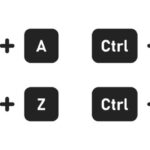480 by 640. That wasn’t just the standard screen size when JTZ Enterprise began designing sites in the mid 90’s, it was the only size! 480 pixels tall and 640 pixels wide was the only screen resolution found in most car dealerships, new and used. You also have to remember our phones were not as smart back then, either. Phones were still only built to make calls; the cameras and colored screens did not exist, yet. All this made web design pretty simple because all websites were the same size.
Think of it like room design. If you have a small living room, you probably have a sparse amount of furniture and decorations and you may have a small TV. But, if you move into a bigger living room you now need more furniture and a bigger TV. Likewise, if you move into something even smaller, you may not be able to fit everything in it. When we all had the standard 640 by 480 display monitors, the ones that were as deep as they were wide, web designers only had to focus on filling one size room (screen).
Today, all that is history. Screen resolutions have gone in two directions. First, the monitors you can buy in a store are super thin and super large. In fact, I can use my family room’s large, smart TV as a monitor. With some TVs reaching 80 inches or more, the real estate web designers have to work with has increased tremendously!
What is given can also be taken away. Another well-known trend in the Internet is mobile. The percentage of surfers using a mobile device like a smart phone or tablet has sky rocketed in recent years. Our clients’ web statistics in 2011 showed an average percentage of website visitors using a mobile device was about 11% of the time. In 2013 the percentage of mobile users almost tripled to 27%. That percentage is even higher for some of our clients who are in other industries such as restaurants, entertainment and lodging. The tablet has been widely publicized recently as the replacement for computers. In 2011, the Pew Research Center says only 35% of Americans owned a smart phone. Today, according to ABC News, 61% of Americans have a smart phone.
Because more Americans have a phone and more of them are using phones and tablets to surf the Internet, it is important to consider what it is they see when they visit your site. Smart phones present a much smaller screen resolution for web browsing. The standard resolution for a smartphone is 240 by 320. When you compare that to today’s average screen size of 768 by 1024 pixels, it is easy to see that what fits on a desktop cannot possibly fit on a smart phone and still be recognizable.
Because a projected 40-45% of your website visitors will be using a smaller device to see your website in the near future, it is vital that every dealer review how their site looks on a small device. There are two important stats with regards to web marketing, Conversion Rate and Bounce Rate. Conversion Rate refers to the number of visitors it takes to convert into one phone call, lot visit, email or purchase. Bounce Rate refers to the number of visitors who click to your site and then back up or click out, for whatever reason. Simply put, if your site cannot be seen on a smart phone, then the user of the phone has no choice but to back up or go to another site. That not only raises your Bounce Rate, it lowers your Conversion Rate because they never had a chance to see your advertising or act on a Call to Action.
In 2011 a new way of designing websites was created and it has since become known as Responsive Web Design (RWD). Along with CSS and HTML5, RWD has changed the design of a site from static to fluid. However, before I go on about RWD, let me debunk a few myths regarding it. First, it is not the only way to address the presentation of your site on a mobile device. Second, unlike what some providers are telling dealers, just because you don’t have a Responsive website doesn’t mean you will not be able to visit your site at all. One advertiser at the National Convention was pitching this doom and gloom approach, and it simply is not true.
The first way many dealers have addressed their mobile presentation is with the addition of a .mobi website. This is a site, separate from your .com site, that is designed specifically for the smaller devices. It allows you to hone your approach to the specific device type/user. Google has put an emphasis on improving the site experience for mobile users. When we add a mobile site to a dealer’s .com site we have seen clicks from Google searches increase by 20-40%, on top of the searches now going directly to the new .mobi site!
RWD is an alternative to the two website solution and it has its plusses and minuses. One advantage is that with RWD, the site also reacts to larger screens. For instance, if your inventory is displayed like an old Auto Trader magazine, with tile images in a 3 cell wide grid, then that page in an RWD site would change to 4 or 5 cells wide on a larger screen. In some ways that can be a negative. When I was still selling cars we would sometimes get so many cars we couldn’t fit them on the lot. Sometimes sales were harder with a full lot because the client could not see the forest for the trees. Likewise, if the user reduces the search to only Hondas, for instance, and you only have 6 or 7 Hondas, then stretching them across a really large screen may still not be the presentation you desire. Another advantage is that Google has indicated they prefer RWD sites over the two site solution because it allows them to only have to index one url. However, having separate sites for .com and .mobi users allow site owners to tailor each site’s SEO efforts to better target their different audiences.
Responsive Sites are often more expensive than the two site approach and not all providers are able to offer RWD sites. At JTZ Enterprise, we offer both solutions and work with the client to determine the best approach. We encourage you to review your site on multiple device types and then work with your current web provider on any improvements you find are necessary.







